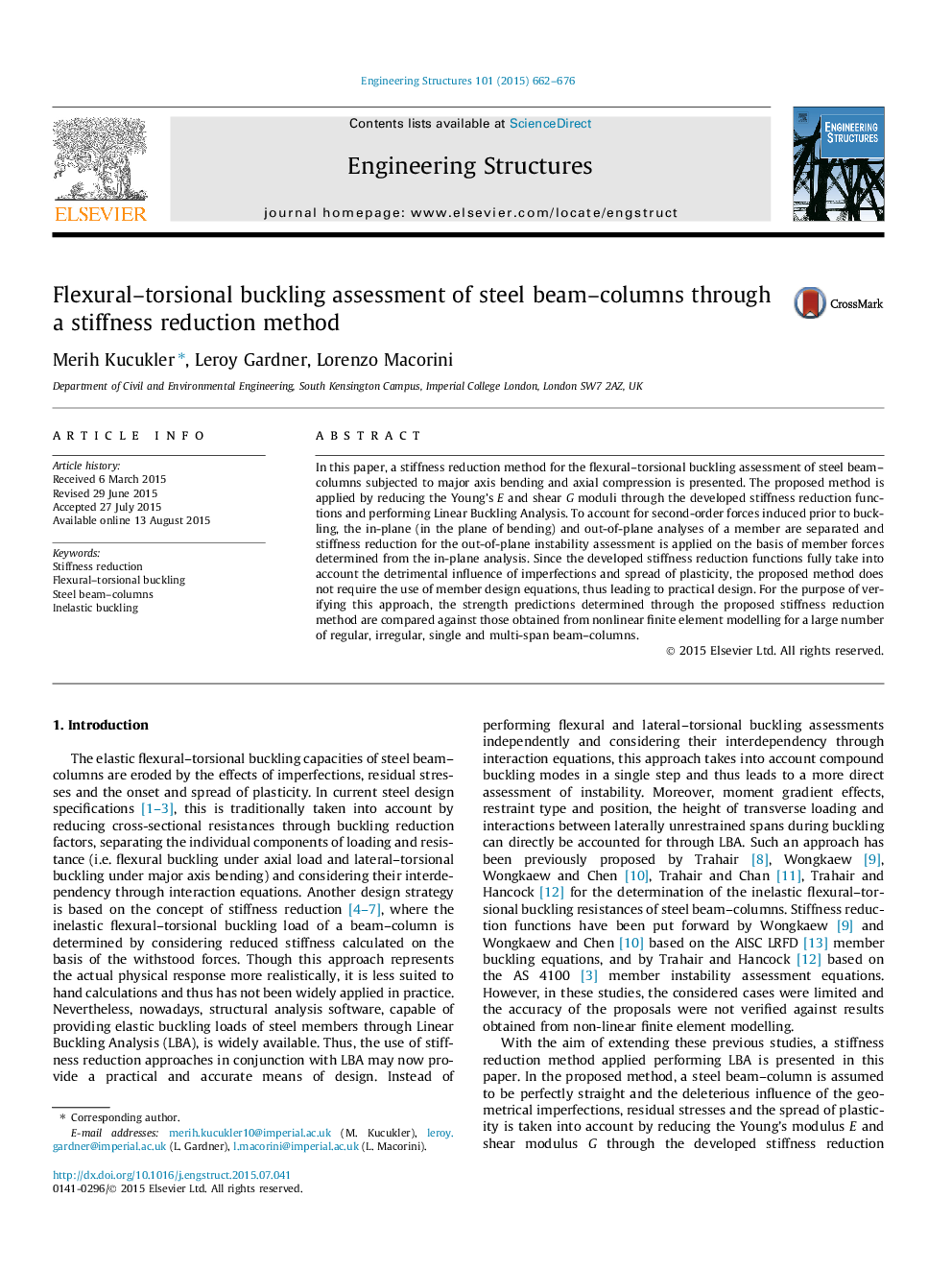| Article ID | Journal | Published Year | Pages | File Type |
|---|---|---|---|---|
| 266073 | Engineering Structures | 2015 | 15 Pages |
•Stiffness reduction method developed for the flexural–torsional buckling assessment of beam–columns.•Shell finite element models validated against existing experimental results.•Comprehensive verification of the stiffness reduction method against FE results.•Illustration of the application of the method to irregular and multi-span members.
In this paper, a stiffness reduction method for the flexural–torsional buckling assessment of steel beam–columns subjected to major axis bending and axial compression is presented. The proposed method is applied by reducing the Young’s E and shear G moduli through the developed stiffness reduction functions and performing Linear Buckling Analysis. To account for second-order forces induced prior to buckling, the in-plane (in the plane of bending) and out-of-plane analyses of a member are separated and stiffness reduction for the out-of-plane instability assessment is applied on the basis of member forces determined from the in-plane analysis. Since the developed stiffness reduction functions fully take into account the detrimental influence of imperfections and spread of plasticity, the proposed method does not require the use of member design equations, thus leading to practical design. For the purpose of verifying this approach, the strength predictions determined through the proposed stiffness reduction method are compared against those obtained from nonlinear finite element modelling for a large number of regular, irregular, single and multi-span beam–columns.
